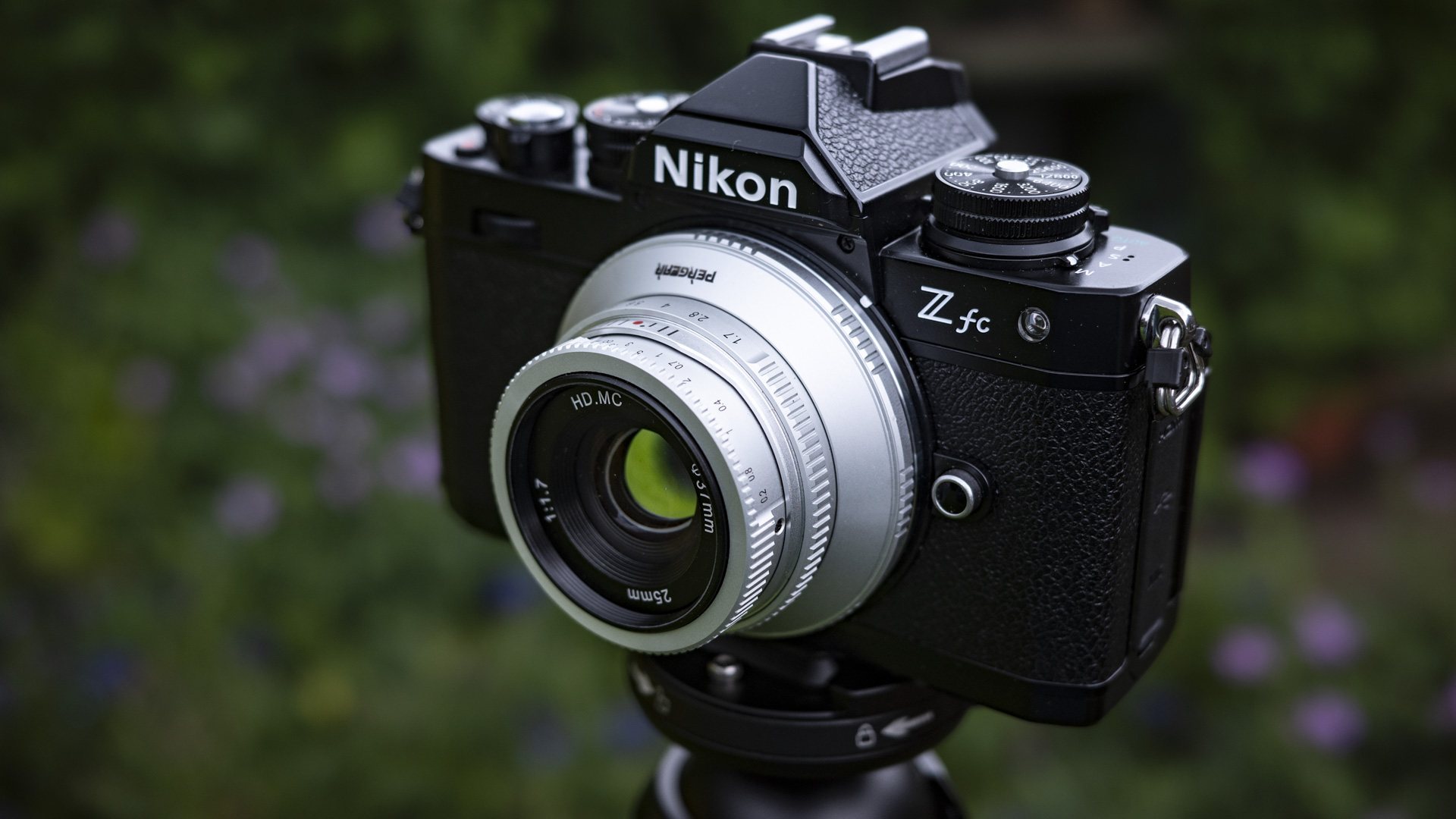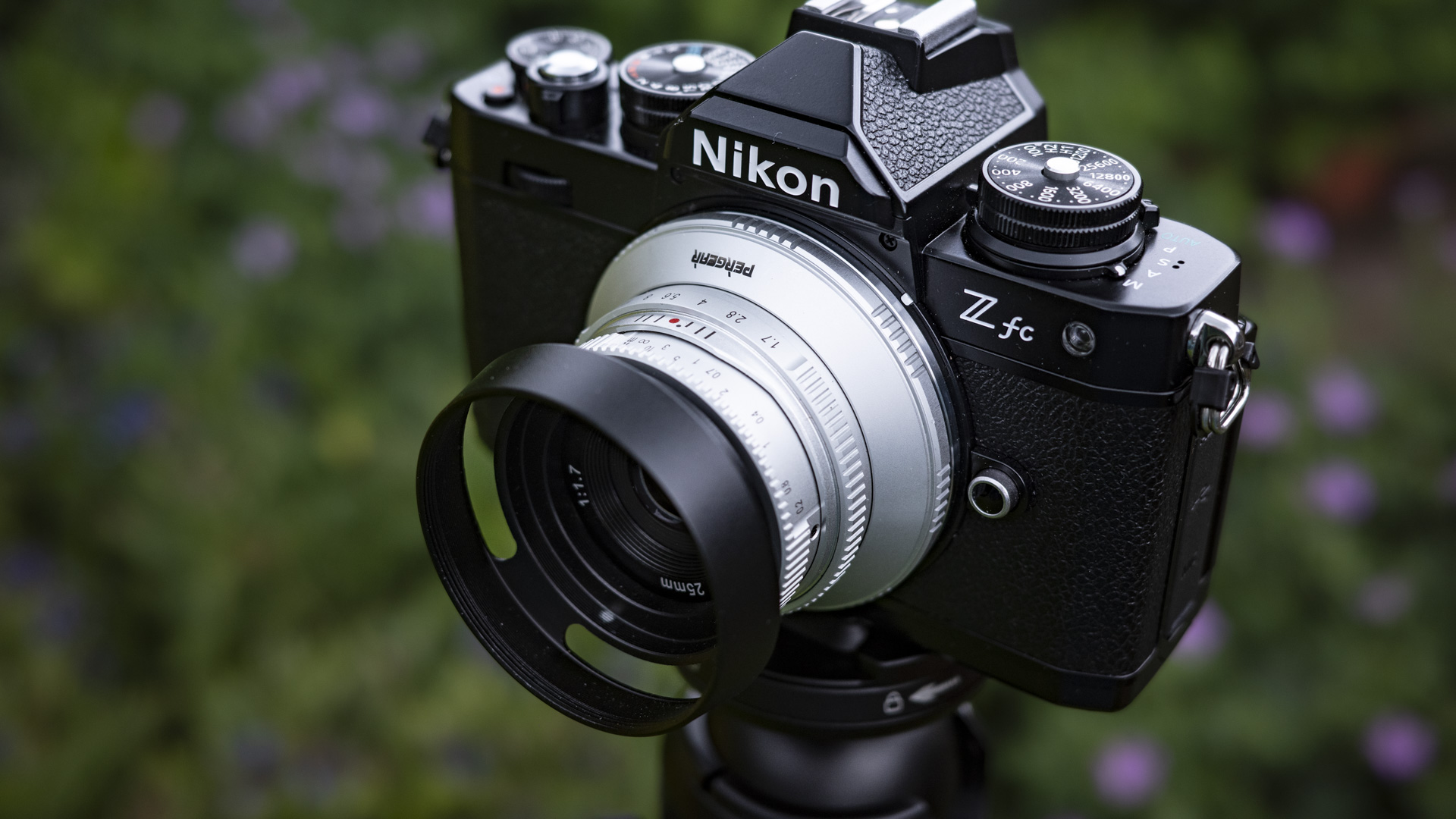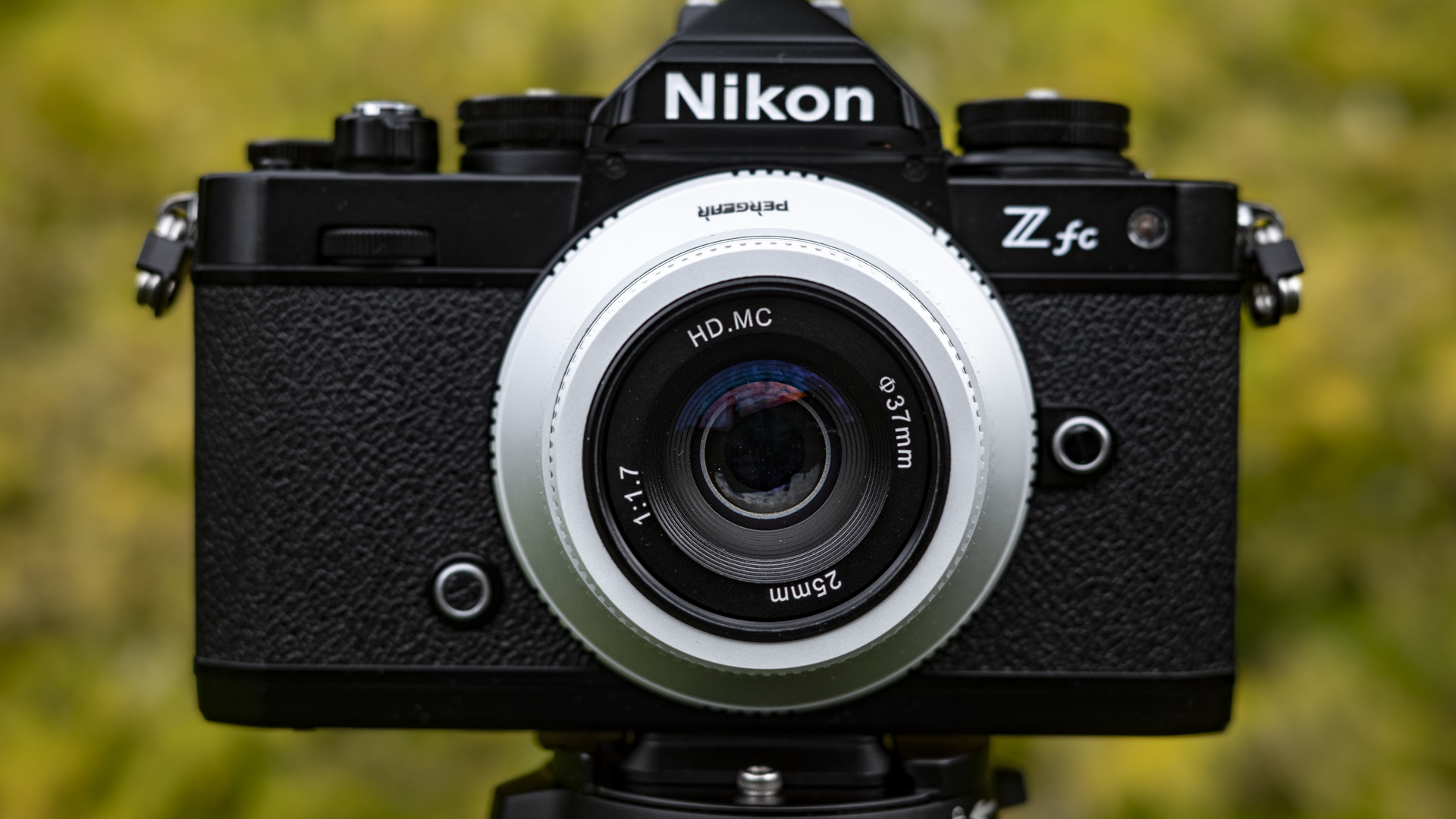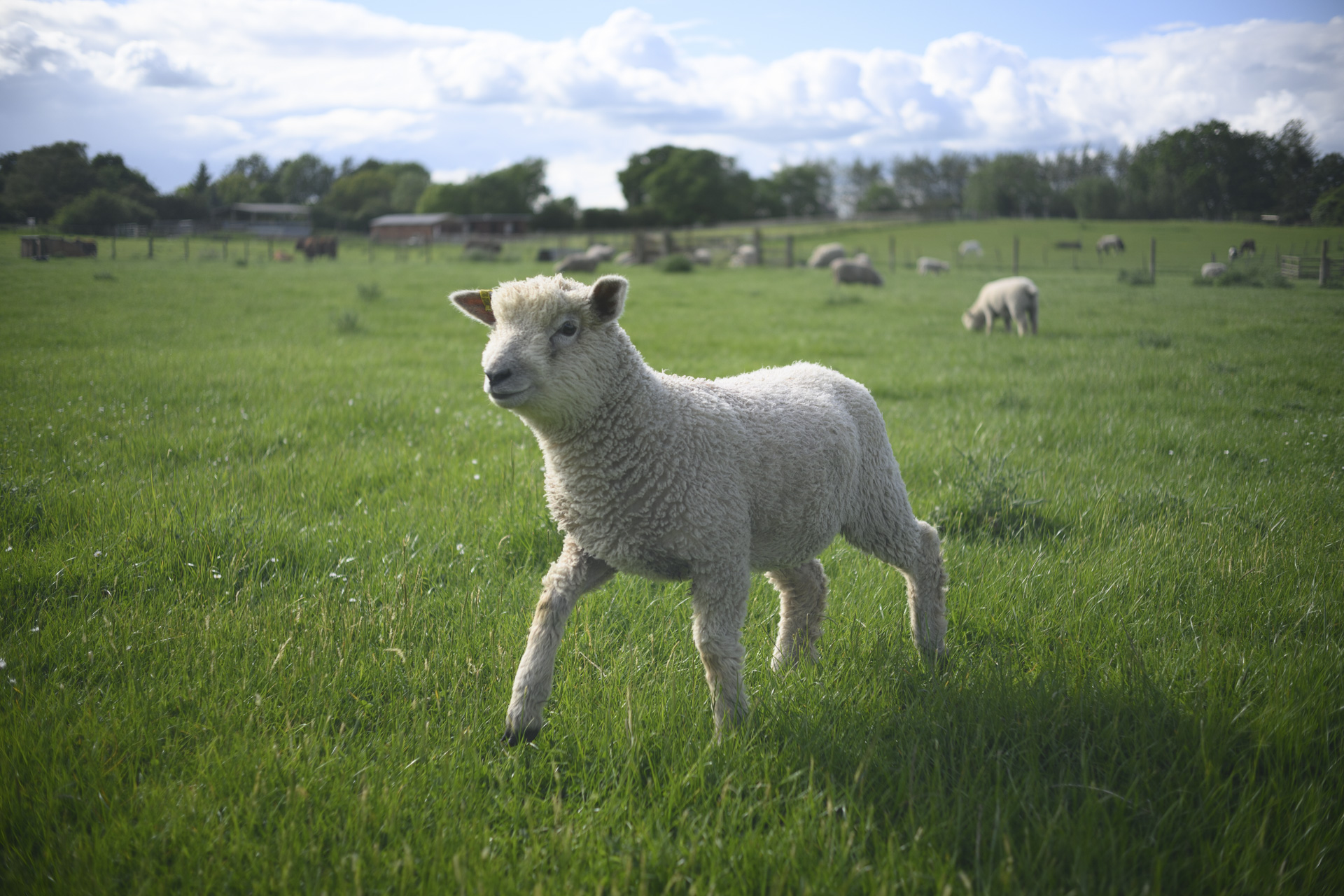I bought the cheapest Nikon Z-mount lens I could find on Amazon – here’s how it compares to pricier alternatives
The Pergear 25mm f/1.7 is unbelievably cheap, but is it any good?

Proper camera lenses are rarely cheap. That is unless they are third-party Chinese-made lenses, like the Pergear 25mm f/1.7. I hadn't heard of the brand before, though it distributes better-known proprietary alternatives such as TTArtisan, Viltrox, and 7artisans.
My discovery was during a quest to find the cheapest Nikon Z-mount lens. The Pergear 25mm f/1.7, which is also available in Fujifilm X, Sony E, Canon RF, and for Micro Four Thirds mounts, was victorious, costing around $70 / £75 on Amazon, while Pergear's own website lists the lens for $70 / £61. That's a super low price, especially for a f/1.7 lens, so I went ahead and got one.
Expectations for this manual focus APS-C lens were kept in check – there's no way such a low-cost lens could be fitted with expensive glass or built to a decent standard, and therefore compete with pricier lenses, could it? I've been using the lens for a long time now, and it's regularly surprised me along the way.
A charming everyday retro lens
First impressions are highly positive. This is no cheap toy lens, but a proper piece of machined metal. The rear lens mount is metal, too. However, the mount lacks electronic contacts, so you don't get direct communication between lens and camera for metadata, such as the camera settings used for photos and videos.
With no electronic contacts and its super cheap price, there is of course no autofocus. This is a manual focus-only lens, unable to make use of your camera's subject detection autofocus to make getting sharp shots so much easier.





Despite its lack of electronic contacts, the cameras that are compatible with the lens offer through-the-lens (TTL) metering. This means that exposure settings such as shutter speed can be automatically adjusted for the aperture selected on the lens – you don't have to shoot in full manual exposure.
I was pleasantly surprised that the lens comes with a protective soft pouch – many pricier lenses don't include such extras. However, a lens hood costs extra (around $7 / £8) and you'll need it to reduce lens flare – more on this later.
Sign up for breaking news, reviews, opinion, top tech deals, and more.
The lens is available in both silver and black versions. As you can see, I had the silver version which is rather striking when attached to a Nikon Z fc. It's also a tiny lens, weighing just 5.6oz / 160g approx. (excluding caps and hood) and measuring just 1.46 x 1.73in / 37 x 44mm. Those dimensions make it a perfect fit with Nikon's APS-C cameras, especially the retro Z fc model.
With its tiny size comes a practical challenge, at least for my large fingers. The two rings that control focus and aperture are fairly close together and with eyes off the lens and immersed in the camera's viewfinder instead, it can take an extra moment to locate the control ring you need.





The front lens element is tiny, as is the filter thread which is just 37mm. If you have the lens hood attached, the front lens cap clips onto the hood rather than the lens itself. Not a biggie, but worth knowing if you're regularly taking the lens hood on and off.
The aperture ring gives a satisfying audible clicked feedback between each aperture setting, which skips from f/1.7 to f/2.8 and then up to f/22 in full stops. Manual focusing is smooth, with a decent 7.87in / 20cm minimum focus distance enabling moderate close-up photography – check out the flower photo in the image gallery below.
Overall the design is super impressive for such a cheap lens. Image quality, on the other hand, is a mixed bag.
Imperfect images
The 25mm lens focal length equates to around 43mm on a full-frame camera, making this a typical everyday lens. You'll probably want to make use of the lens' maximum f/1.7 aperture a lot. This setting can give you a lovely shallow depth of field, but it's also riddled with distortion.
At f/1.7, sharpness and contrast in particular are reduced dramatically. The two similar shots of a cow below, plus other examples, are shot at f/1.7 and f/5.6 – the latter is the lens' sharpest setting. As you can see, colors are richer in the photo at f/5.6, while the f/1.7 also has pronounced vignetting, meaning darker corners.






The reduction in contrast isn't just about glare – it's evident whether you have the lens hood on or off and in any lighting conditions, not just when pointing in the general direction of the sun.
There are also weird out-of-focus characteristics when shooting at f/1.7. If you want a technically excellent lens, the 25mm f/1.7 isn't for you. But if you're open to what can feel like one-of-a-kind bokeh effects – which I for one can entertain – then you can have some fun here.
You'll need to stop the lens aperture down to around f/5.6 to get the best possible image quality and sharpness and avoid lens distortion. You lose the pleasant background bokeh, but the point is that it's possible to get sharp shots with what is a ludicrously cheap lens.










Your biggest challenge to overcome for getting sharp shots is nailing manual focus – the margins for error are tiny, and the results when you've missed the mark are unforgiving.
Unless you delve into in-camera image playback, zooming in for a closer look – which if you're like me doesn't come naturally in the moment – you'll discover after the fact that a number of your photos are out-of-focus. Soft focus is a reality with most manual focus lenses and shallow depth of field. You need to practice a lot to improve your hit ratio of sharp pictures.
Overall, in the Pergear 25mm f/1.7 you get a well-designed and compact manual focus metal lens with characterful images at f/1.7 and scope for reasonably sharp detail when closing the aperture down a little.
Technically the 25mm f/1.7 can't match pricier lenses and you miss out on autofocus, but it's a fun everyday lens to get to know.
You might also like

Tim is the Cameras editor at TechRadar. He has enjoyed more than 15 years in the photo video industry with most of those in the world of tech journalism. During his time as Deputy Technical Editor with Amateur Photographer, as a freelancer and consequently editor at Tech Radar, Tim has developed a deeply technical knowledge and practical experience with cameras, educating others through news, reviews and features. He’s also worked in video production for Studio 44 with clients including Canon, and volunteers his spare time to consult a non-profit, diverse stories team based in Nairobi. Tim is curious, a keen creative, avid footballer and runner, and moderate flat white drinker who has lived in Kenya and believes we have much to enjoy and learn from each other.